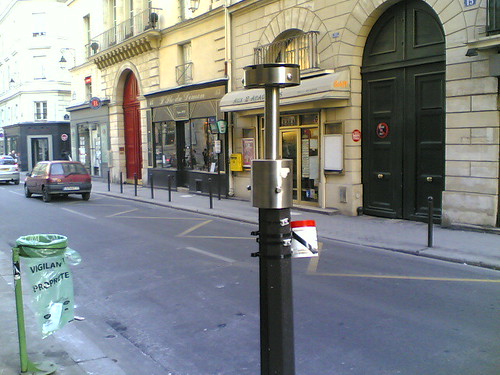Villes 2.0
Posted: January 14th, 2009 | No Comments »Last week I was in Paris for the closing event of the Villes 2.0 program that gathered experts and practitioners on the “digitization” of the city and its novel open and participatory practices. Adam Greenfield sat the stage for the event with his opus “The Long Here, the Big Now, and other tales of the networked city” (video from Visualizar) that pleased me with some new considerations on the implication of this new urban reality on the practices of architects and urban planners. In other words, how can we develop “villes” (cities) 2.0 for us, humans 1.0? My contribution (slides) took place around this notion of “villes 2.0″, a city with new urban actors named Google, wireless networks, but also a city fostering citizens contributions and bottom-up information (see La Ville 2.0 existe déjà, on l’a rencontrée). I described how through our implicit and explici interactions with these new urban actors, we generate data that, when aggregated over space and time, bring novel perspectives (e.g. in real-time, on dynamics of the city. Beyond the possibility to visualize these dynamics, often useful to open or support discussion in the urban area, I suggested with examples of my recent research works that these data can become sources of urban indicators, valuable to develop an urbanism based on evidences (in the sense of signs and indications), particularly promising to perform new types of post-occupency evaluations. I described these notions more extensivily at Visualizar in Madrid, last November (video of From Sentient to Responsive Cities). Other sessions, covered the current and new practices to innovate in the urban realm (see Aborder les questions urbaines par l’innovation) and how this innovation can take place with open access to the edition of the city (e.g. with open APIs), a shared control between private companies and citizens leading with a promotion of the appropriation instead of a stubborn approach of innovation (see La ville 2.0, plate-forme d’innovation ouverte).
Villes 2.0 is a unique program, mixing think-tank and do-tank approaches, with outcomes in the forms of 3 books: “La ville 2.0, complexe … et familière“, “Manifeste pour une mobilité libre et durable” and “La ville 2.0, plate-forme d’innovation ouverte” supported by the exploration of the theories through several urban demos such as a Citywall, a real-time control system, and CityPulse as well as prototypes (see the flickrset).

Within the Ville 2.0, the contemporary “Rue” 1.0 in Paris, governed by anti-terror measures and sustainable development. Here a sensor of some sort next to the vigipirate-promoted transparent trash bags sporting the slogan “viligance” and “cleanliness”.
Relation to my thesis: Testing my research outside of the academic arena. Interestingly, several urban/human geographers approached me after the session, interested on the potentials of my work to support their traditional approaches.
Many thanks to Thierry Marcou, Fabien Eychenne and Daniel Kaplan for the invitation!

